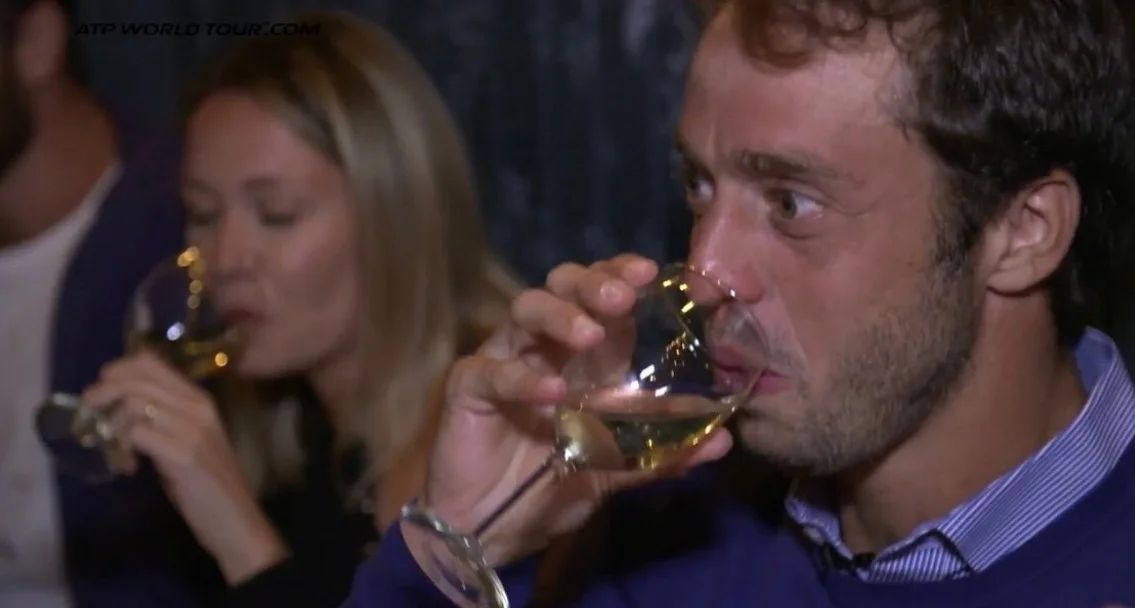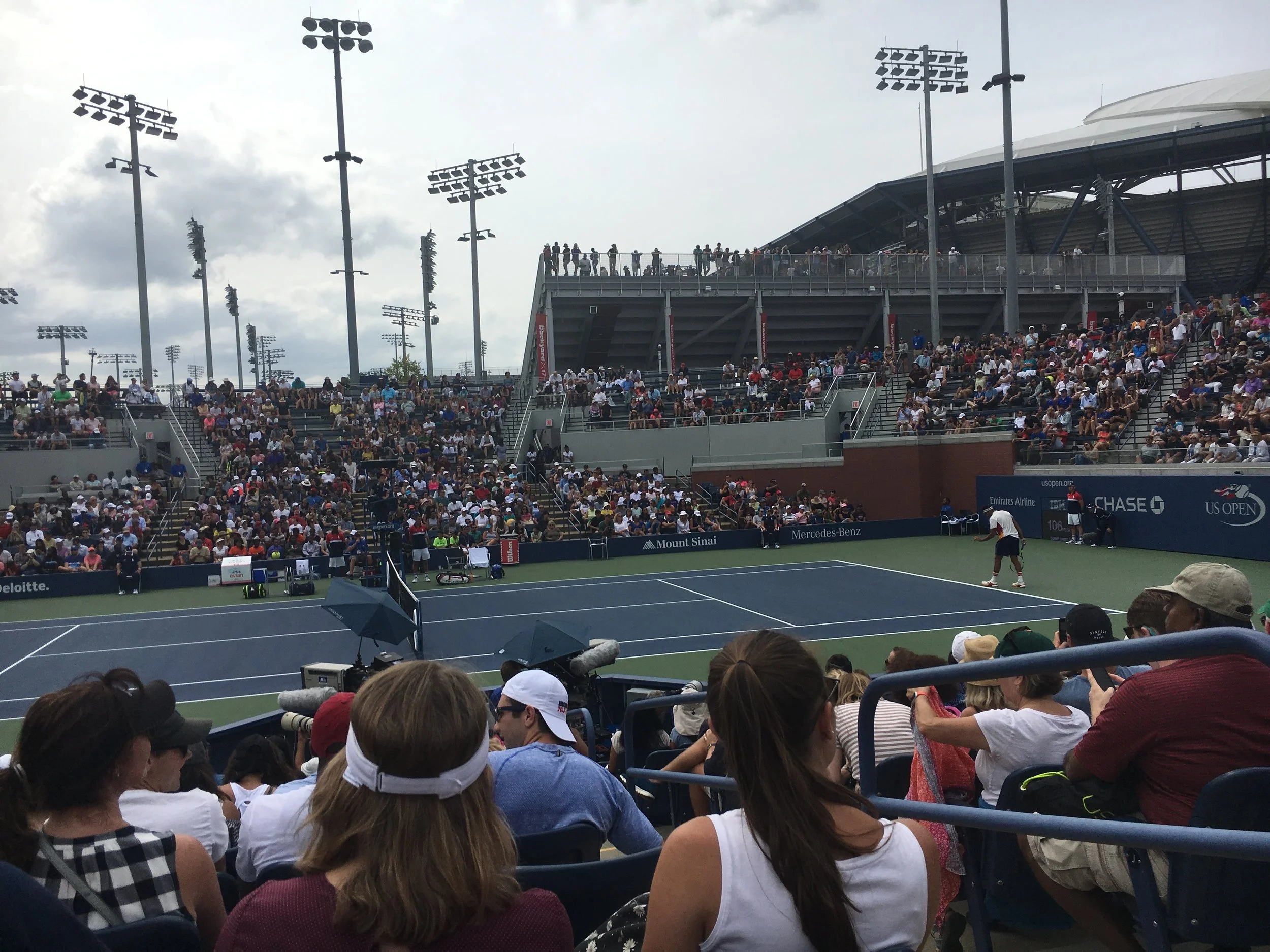The Eternal Sunshine of Paolo Lorenzi's Spotless Mind
16-year-old Zachary Svajda’s entire body is cramping. He is so tired, his fingers can no longer grasp his tennis racquet. As he stares in anguish into the New York evening, one wonders if this is the closest Zachary has come to death in his entire life thus far. He is here because the US Open, just for kicks, annually gives the winner of the USTA U18 National Championships a main draw entry. The child who wins this spot is typically not expected to do much. Unless you are a ridiculously talented prodigy like Coco Gauff or Rafael Nadal, even the best players under 18 are not mature enough to take on anyone on tour. Svajda was initially set to play No. 5 seed Kevin Anderson, who likely would’ve won in straights without losing serve against the young American. That would’ve been completely fine.
Instead, Svajda is playing Paolo Lorenzi. The odds of this happening were infinitesimal. First, Svajda had to be drawn against Anderson, a 1:64 shot. Then, Anderson had to pull out with a last-second injury after the draw was made, meaning that a “Lucky Loser” had to be selected from the players who lost in qualifying. Then, out of a group of four lucky losers, Paolo Lorenzi was drawn from the pot. This chain of events directly triggered Zachary Svajda’s current incapacitation in Flushing Meadows on Monday. Coming into the match, Lorenzi’s win percentage was somewhere around -1500, a 93.75% chance.
Of course, Paolo refuses to make it easy. In the first two sets, Svajda looks like the prototypical young challenger. Lorenzi appears shaky and old, double-faulting multiple times and hitting the ball without any conviction. When he loses the second set tiebreak 7-5, it seemed like Svajda was going to waltz into the second round. Yet Paolo, rather than giving up like so many tennis players do, kept grinding. He wins the next three sets, prolonging the match to an agonizing four hours and 24 minutes. While Svajda’s body crumbled, the soon-to-be 38-year-old Lorenzi—sweat dripping, legs burning—never gave up.
Lorenzi is a prime example of an under-appreciated sports talent: the ability to nobly suffer. This may seem absurd, given the sportswriting and the capitalistic phenomenon of lauding “the hard worker who made so many sacrifices”, but I would argue that the ability to suffer and the ability to work hard are different. Working hard is a simple concept, especially in the athletic sense. Show up every day. Try when you get there. Don’t give up. Keep practicing. But, for many of us, the hard work comes either as a response to suffering, or a preventative measure against suffering in the future. The hard worker is often governed by complex, vengeful emotions, or forced to work by overbearing parents and friends. Sometimes, that’s the only thing that keeps the wheels turning. When it runs out, we do something else.
For the noble sufferer, the martyr, the Lorenzi, suffering is merely a natural state of being. These are the obsessive types, the true believers who latch onto disastrous situations and never let go. These are also, sometimes, extremely valuable traits in our society, the people who truly withstand everything, regardless of expectations or goals. It often feels like Paolo has a better chance to win if a match goes five hours than if a match is 90 minutes. He lives for the grind.
On Thursday, Paolo Lorenzi goes five sets with 20-year-old Miomir Kecmanovic. This time, Kecmanovic was the heavy favorite. Lorenzi is touted as a clay court specialist, and Kecmanovic has been on quite a run during the hard court season. Didn’t matter. Lorenzi ground him into fine powder over five sets and nearly five hours anyway. Friday, Lorenzi faced three-time Grand Slam champion Stan Wawrinka at Louis Armstrong Stadium, once again as a huge underdog. Lorenzi bothered Stan all day, missing potential break points to steal the first set and forcing two tiebreakers. After a racquet toss, several swears, and an uncountable number of “come ons”, Wawrinka finally beat the meddlesome Italian.
Lorenzi has been doing this forever. He has one of the ugliest and least attractive games on this side of Gilles Simon, mostly using it to win 21 (!) Challenger titles, most of which are on clay. His best years were in 2016 and 2017, when he broke into the top 50 and won an ATP title in Kitzbuhel, but he was already in his mid-30s by then and not expected to do much more. The last two years have been bad for Paolo, and he was on the verge of dropping out of the top 150 by the end of the year. One would expect, after finally cashing into the big-time ATP prize money pool after over a decade toiling on crappy Italian clay courts, that Lorenzi would retire soon after. Instead, he has gone right back to playing every clay Challenger and qualifying event under the sun. That’s not to say that playing in front of energized crowds in random Italian towns for money isn’t fun. It’s very fun. The endless ice baths, physical wear and tear, and maintenance necessary surely aren’t.
With this run, he will return to the top 120 and should have plenty of chances to rise back into direct entry status at Slams in the next few months. At the very least, Lorenzi will be back for another year. Remarkable stuff, really, considering the other older players on Tour have massive serves and don’t play this monotonous, baseline-to-baseline style
Paolo Lorenzi also looks like this when he serves:
Let’s be clear; it’s not normal for 37-year-old men to be grinding out Challengers and random tour events. This year, we’ve seen David Ferrer, Marcos Baghdatis, and Gilles Muller all retire rather than play at the minor leagues of tennis until their bodies break down. Lorenzi has also refused to become a doubles specialist (he has good volleying skills), another popular route for tennis players who are losing it in singles.
““Vanity of vanities, all is vanity.””
To be fair to Paolo, the aging curve of tennis is changing. Older players are playing longer than ever. But while it’s easy to understand for Federer, Nadal, and Djokovic, it’s harder to fathom for Lorenzi, whose only elite skill at this point in his career is the ability to wear down opponents. That should go away much quicker, and yet Lorenzi is still here, and still making the third round of Grand Slams on unforgiving hard courts. At this point, it’s fair to expect we will live in the eternal sunshine of Paolo Lorenzi forever.





